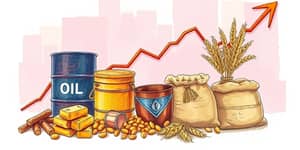
After a prolonged period of regulatory constraints and pandemic disruptions, small business owners across the United States are reporting a cautious but welcome rebound in confidence. Recent surveys indicate a slight uptick in sentiment, reflecting the impact of lifted restrictions and renewed operational freedom. Yet even as sentiment improves, many entrepreneurs face ongoing economic headwinds that temper long-term optimism.
The combined picture from multiple indices shows a complex landscape where short-term gains coexist with persistent concerns about inflation, compliance burdens, and trade policy uncertainty. As the economy moves into mid-2025, small business leaders are navigating a world of opportunity and risk.
The MetLife & U.S. Chamber of Commerce Q2 Small Business Index rose to 65.2, up from 62.3 in Q1. This marks a marginal improvement in overall sentiment even though the score remains below Q4 2024 levels. Many owners attribute this boost to the easing of pandemic-related or other regulatory restrictions, which has enabled them to operate at normal capacity for the first time in months.
Similarly, the NFIB Small Business Optimism Index climbed to 98.8 in May 2025, the highest reading in three months. Owners report greater confidence in near-term revenue and staffing plans. Local demand has rebounded in many communities, and foot traffic is gradually returning to pre-pandemic levels.
Despite this positive shift, economic challenges remain front and center. Inflation continues to squeeze margins even as price pressures have eased slightly from earlier quarters. A significant share of businesses have adjusted their own pricing to respond to rising input costs, passing some of the burden onto consumers.
Although inflation concerns eased to 48% in Q2 from 58% in Q1, it remains the top overall worry of inflation for many. Simultaneously, 40% of respondents note they’re dedicating more time to bureaucratic processes, an uptick from 33% last quarter.
Tariffs and shifting trade policies have introduced another layer of complexity. A recent 90-day pause on tariff escalations offered temporary relief but ongoing uncertainty. Many small manufacturers and importers, however, still worry about rising costs and disrupted supply lines. Negotiations on long-term U.S.–China agreements and international deals continue to cast a shadow over purchasing decisions.
These businesses often operate on thin margins, and sudden cost spikes can force difficult choices. Passing higher costs onto customers risks dampening demand, while absorbing them erodes profitability. As a result, long-term investment plans are frequently delayed or scaled back.
Amid these uncertainties, many owners remain upbeat about workforce and capital expansions, though they proceed with caution. Labor quality and availability rank just behind inflation as top hiring concerns. Companies are increasingly investing in training programs and retaining employees through flexible schedules and benefits.
To manage ongoing cost pressures and compliance demands, small business operators are adopting efficiency measures. This includes automating key processes, renegotiating supplier contracts, and reevaluating pricing structures. There is clear optimism about hiring and investment, but strategic planning now incorporates multiple economic scenarios.
As small businesses chart their course for the remainder of 2025, many express a cautious long-term growth outlook. Owners remain optimistic about cash flow and health in the coming months, but they are hesitant to commit to major expansions without clearer economic signals.
Expectations vary: some anticipate a flat economy, while others brace for a mild recession driven by global headwinds. At the same time, there is evident hope for future policy relief through tax and regulatory reforms, which could catalyze more robust investment and hiring.
Ultimately, small business confidence in mid-2025 paints a picture of resilience. Entrepreneurs are adapting to a shifting landscape, leveraging new freedoms while remaining mindful of persistent challenges. The blend of cautious optimism and pragmatic strategy will likely define small business performance as the year progresses.
References













